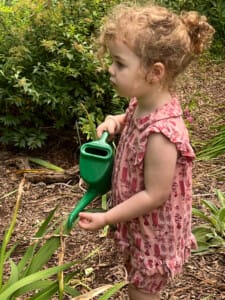There are common questions that parents and caregivers often ask – we address of few of those here. Please contact us with additional questions you may have!
There are common questions that parents and caregivers often ask – we address of few of those here. Please contact us with additional questions you may have!
 When a guide shows a child, in a clear and direct way, what is expected or how to do something, it entices them to try new things. When a child has a chance to practice without fear of judgement, and with the freedom to make correct their own mistakes, they are propelled by their an inner drive to be active members of the society around them .
When a guide shows a child, in a clear and direct way, what is expected or how to do something, it entices them to try new things. When a child has a chance to practice without fear of judgement, and with the freedom to make correct their own mistakes, they are propelled by their an inner drive to be active members of the society around them .
Within the classroom, the consistent expectations and careful, individual presentations allow the child to know how to do what is expected. Consequently, the child builds confidence and takes pride in their abilities. The guides will meet the child where they are and support them toward greater independence based on their readiness. In the meantime, the child can watch and get assistance from their amazing peer group of older children who are modelling a high level of skill and independence.
The classroom guide, with support of the assistant guides, is constantly observing to see what children are interested in, are repeating, and have mastered. Therefore, they keep careful records of where each child is within the curriculum, and what they are ready for next. When the adults works one-on-one or in a small group, they make careful notes about each individual’s level of skill and mastery with the material.
Because Montessori is so different from traditional education, parents often ask about testing. However, the classroom guide can learn a child’s comfort level with a material through working with the child during lessons and presentations. Additionally, through observation, the classroom guide can make note of what each child has mastered and what they need practice with. The guide regularly observes the children, often taking photos, to get a sense of the child’s level of skill with a subject. There is no need to test when the child’s work with the material displays mastery of the concept.
The guide sets the level of freedom for each child based on their need for support. Consequently, the adults will allow more freedom in the environment as each child grows in their self discipline. The children are also presented with “grace and courtesy lessons” to help them role play and practice skills for working and living in a community. While allowing each of the children to follow their interests may seem chaotic, the main guiding rule to avoid harming others. The classrooms allow room for exploration as long as it is not disruptive, damaging, or dangerous.
Montessori has a reputation of being both too loose and too tight, but we believe we are perfectly in the middle! Parents often ask about aspects of the method, such as presentations, because children will come home saying they have to do things a certain way. That is not unique to Montessori children, the need for order is a tendency of all children!
The purpose of presenting material is to careful show a child how to do something of interest. The presentation calls to the child’s tendency for order and makes use of the child’s absorbent mind. Children develop self discipline when they are inspired to try activities that require self control. If there were no lessons, a child would not know the ultimate purpose of what they are doing. Giving the child a purpose, inspires precision and focus. But the adults also observe and are very careful not to intervene as the child explores the material once it is presented, unless there is a safety issue. The guide uses presentations to inspire and encourage development of skills and self-control. The presentations are a introduction that then allows the child to further explore the materials.